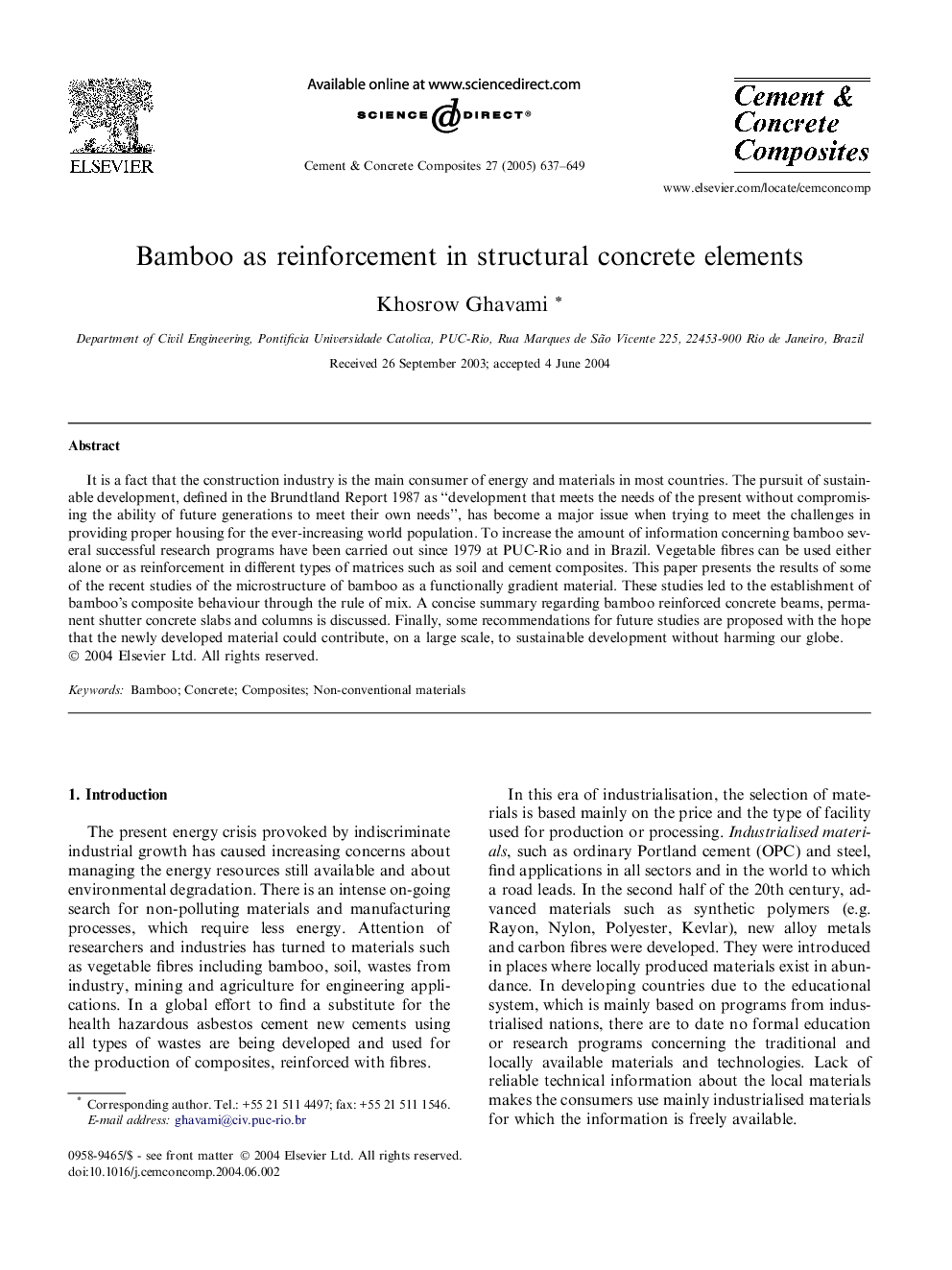| Article ID | Journal | Published Year | Pages | File Type |
|---|---|---|---|---|
| 10622035 | Cement and Concrete Composites | 2005 | 13 Pages |
Abstract
It is a fact that the construction industry is the main consumer of energy and materials in most countries. The pursuit of sustainable development, defined in the Brundtland Report 1987 as “development that meets the needs of the present without compromising the ability of future generations to meet their own needs”, has become a major issue when trying to meet the challenges in providing proper housing for the ever-increasing world population. To increase the amount of information concerning bamboo several successful research programs have been carried out since 1979 at PUC-Rio and in Brazil. Vegetable fibres can be used either alone or as reinforcement in different types of matrices such as soil and cement composites. This paper presents the results of some of the recent studies of the microstructure of bamboo as a functionally gradient material. These studies led to the establishment of bamboo's composite behaviour through the rule of mix. A concise summary regarding bamboo reinforced concrete beams, permanent shutter concrete slabs and columns is discussed. Finally, some recommendations for future studies are proposed with the hope that the newly developed material could contribute, on a large scale, to sustainable development without harming our globe.
Keywords
Related Topics
Physical Sciences and Engineering
Engineering
Industrial and Manufacturing Engineering
Authors
Khosrow Ghavami,
